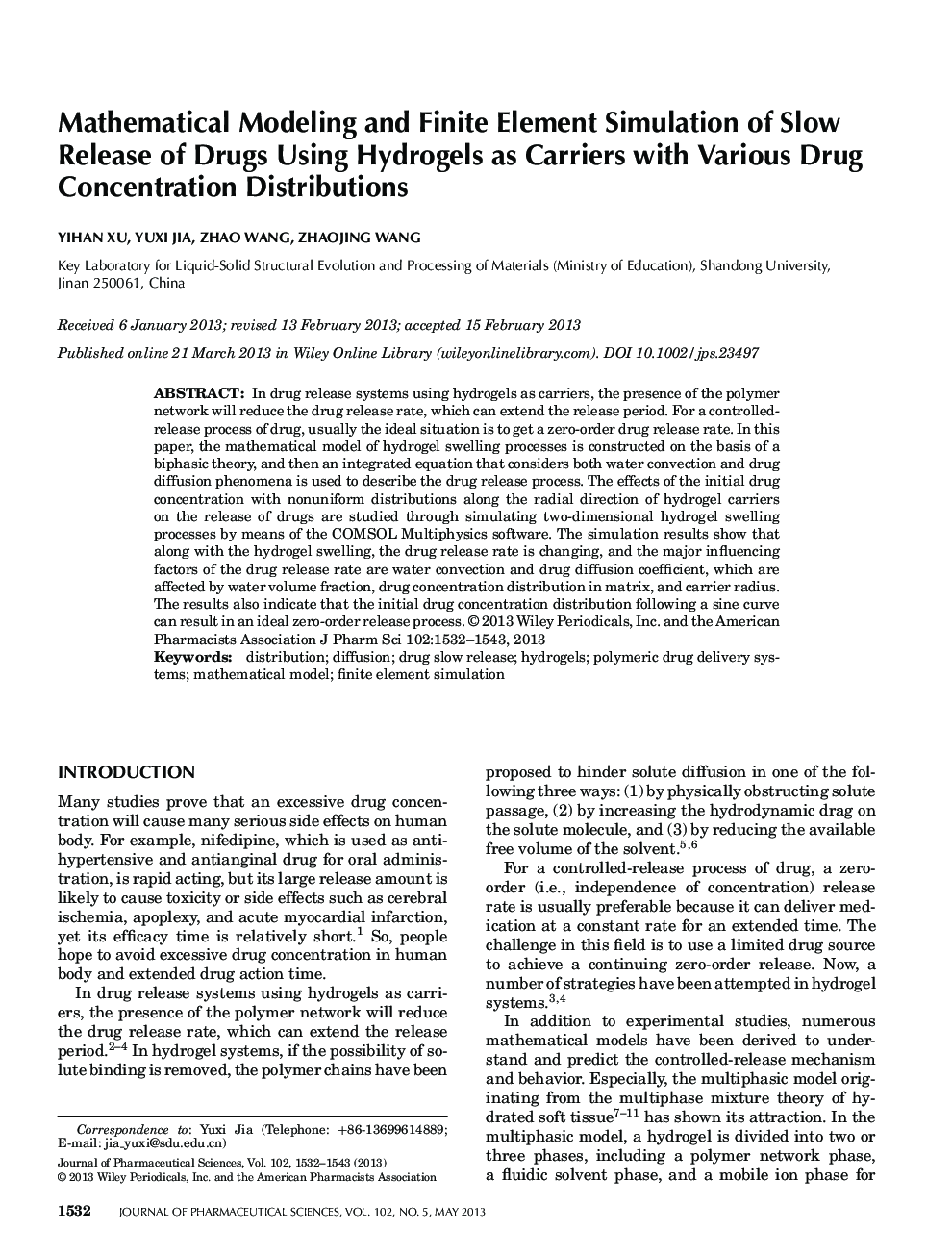| Article ID | Journal | Published Year | Pages | File Type |
|---|---|---|---|---|
| 2485369 | Journal of Pharmaceutical Sciences | 2013 | 12 Pages |
Abstract
In drug release systems using hydrogels as carriers, the presence of the polymer network will reduce the drug release rate, which can extend the release period. For a controlled-release process of drug, usually the ideal situation is to get a zero-order drug release rate. In this paper, the mathematical model of hydrogel swelling processes is constructed on the basis of a biphasic theory, and then an integrated equation that considers both water convection and drug diffusion phenomena is used to describe the drug release process. The effects of the initial drug concentration with nonuniform distributions along the radial direction of hydrogel carriers on the release of drugs are studied through simulating two-dimensional hydrogel swelling processes by means of the COMSOL Multiphysics software. The simulation results show that along with the hydrogel swelling, the drug release rate is changing, and the major influencing factors of the drug release rate are water convection and drug diffusion coefficient, which are affected by water volume fraction, drug concentration distribution in matrix, and carrier radius. The results also indicate that the initial drug concentration distribution following a sine curve can result in an ideal zero-order release process.
Keywords
Related Topics
Health Sciences
Pharmacology, Toxicology and Pharmaceutical Science
Drug Discovery
Authors
Yihan Xu, Yuxi Jia, Zhao Wang, Zhaojing Wang,
